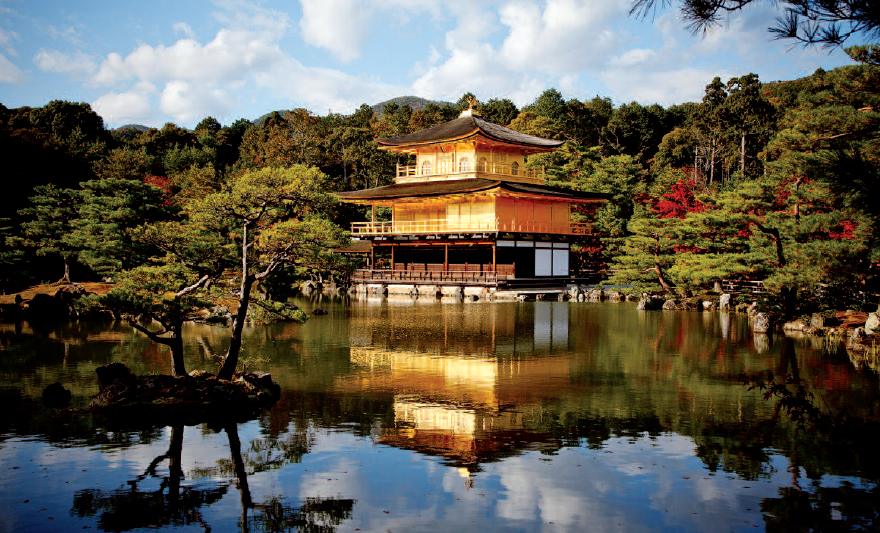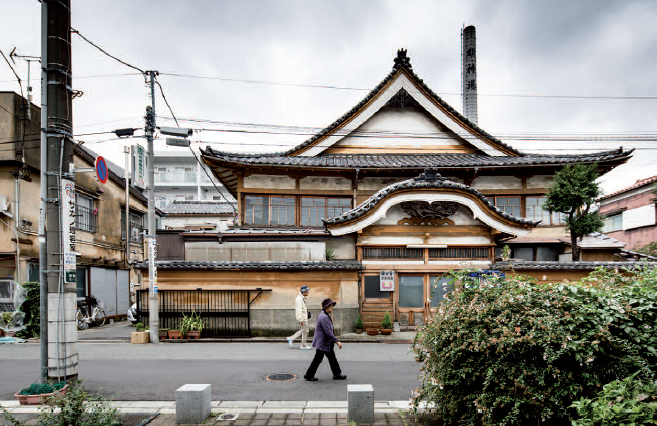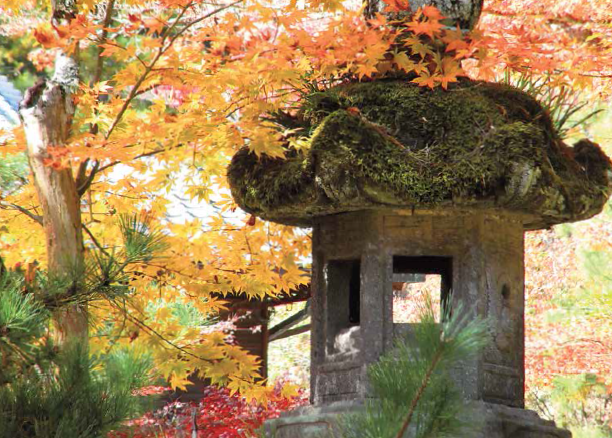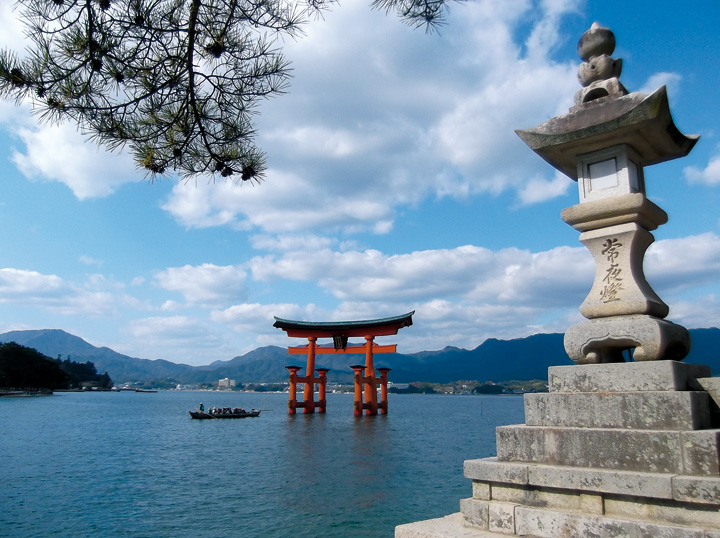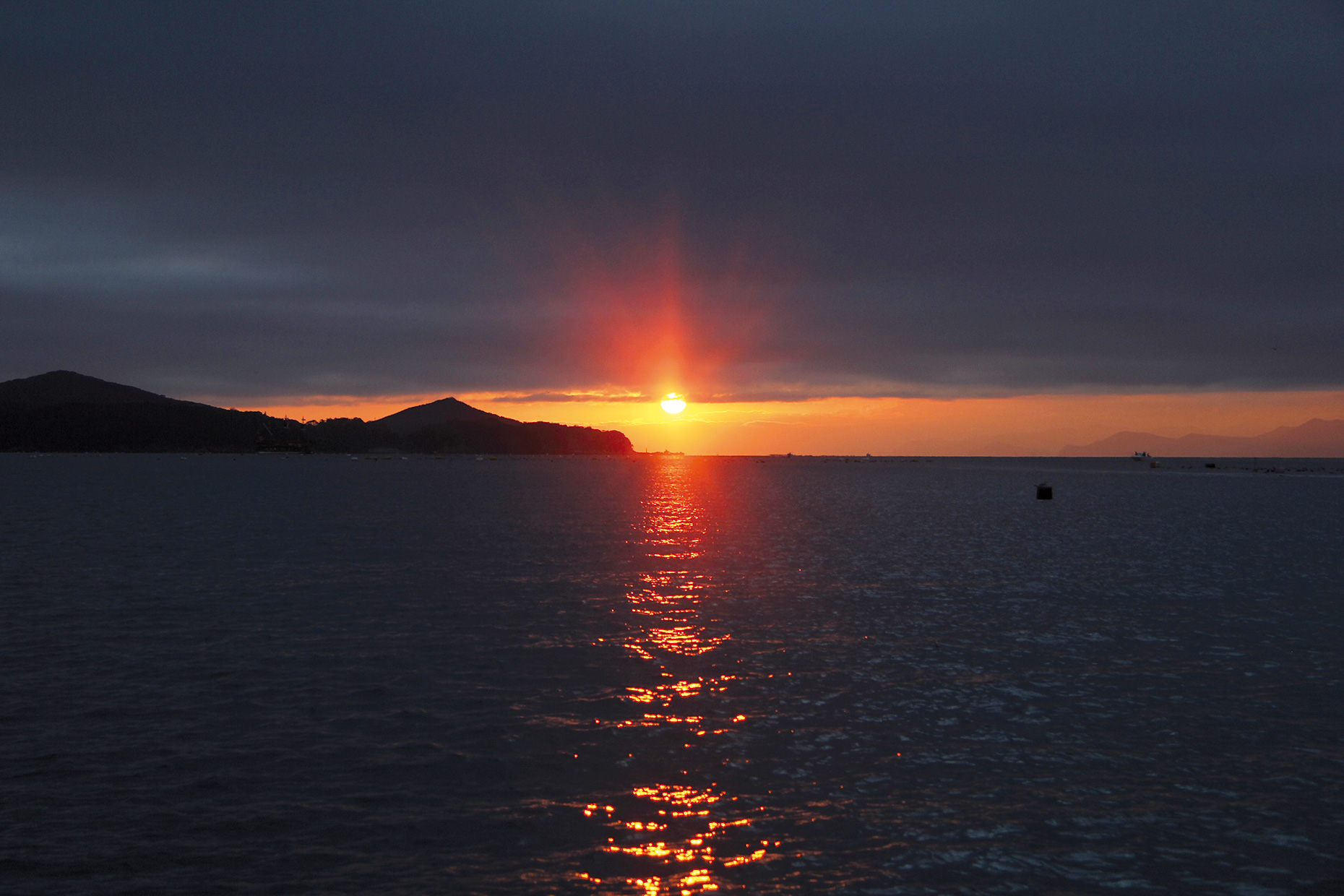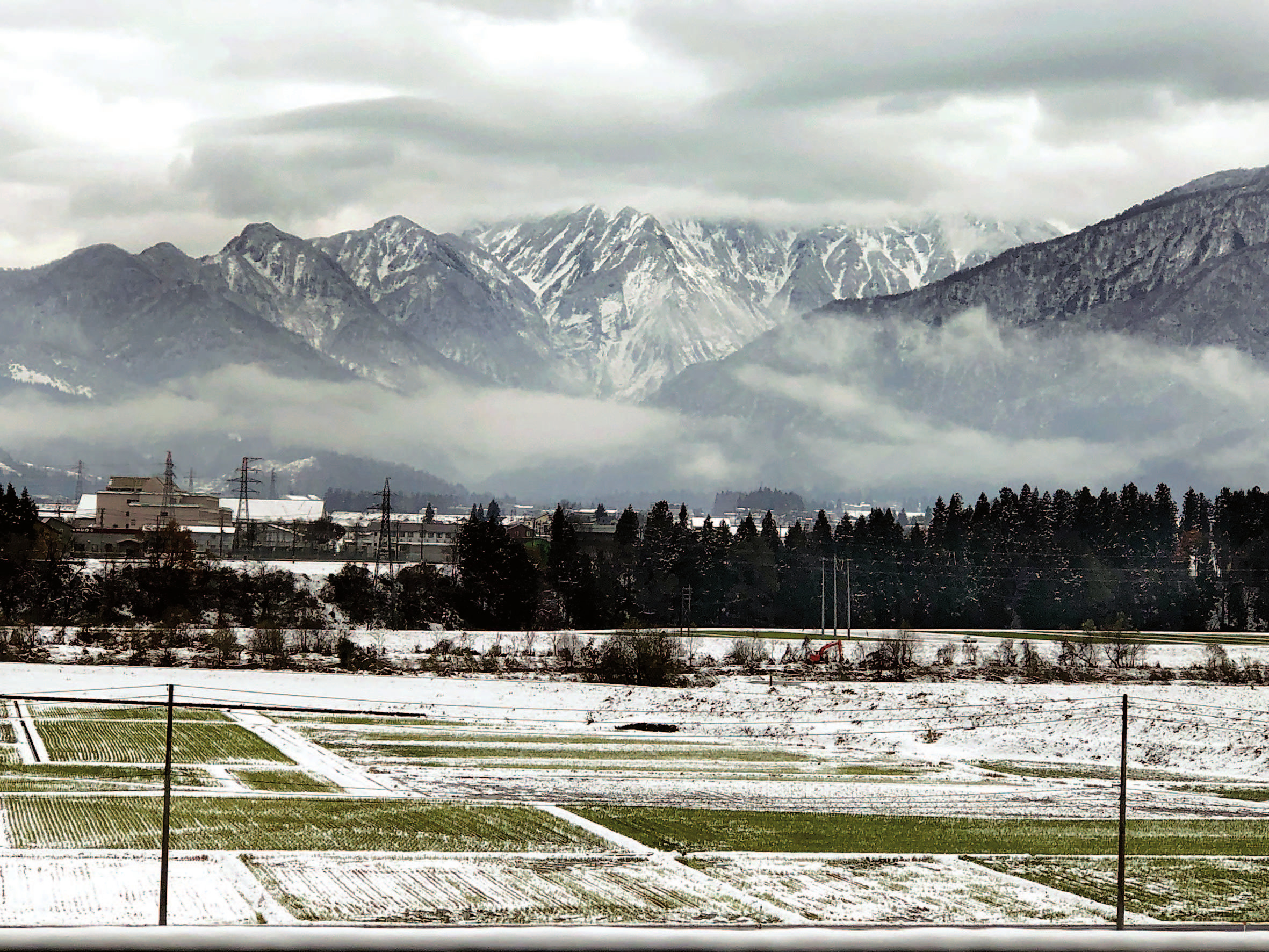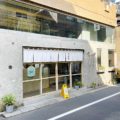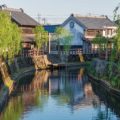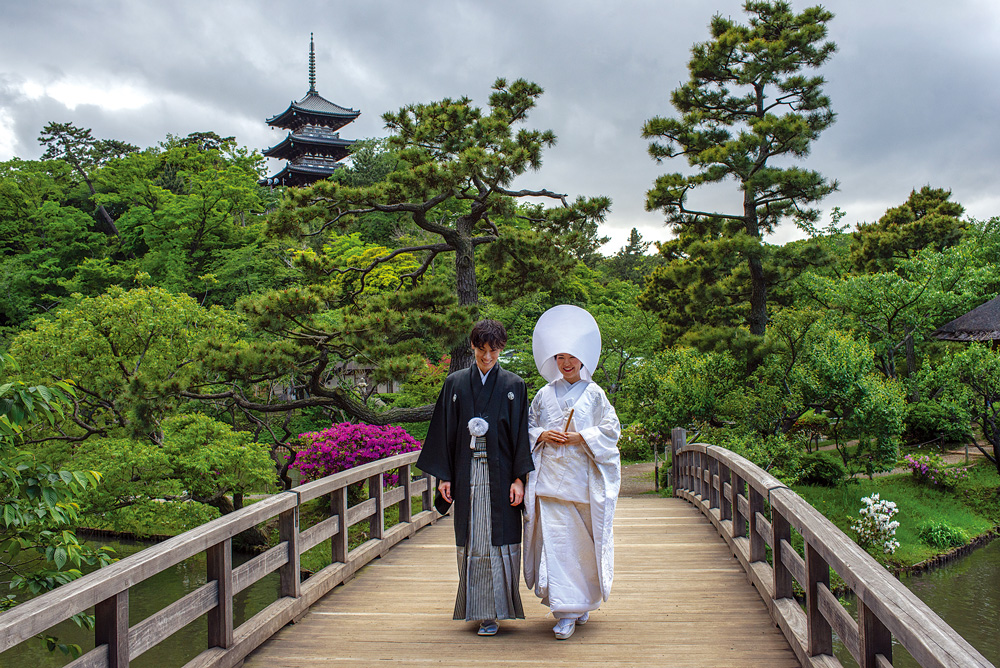

This magnificent park is not only an island of greenery but an architectural sanctuary. It is unmissable.
The Honmoku district, located south of central Yokohama, is rarely visited by foreign tourists despite having a rich and interesting history. Take, for example, the name of the city of Yokohama: it literally means “crosswise beach” and it refers to the land formation near Honmoku, which jutted out into the sea from the hills. The original village of Yokohama was located on this long narrow sandbar. When, in 1859, the place became a treaty port under the direct control of the shogunate (hereditary military dictatorship), the villagers were evicted and replaced by government officials and the Japanese and foreign merchants who would form the core of the new town.
The area was soon overrun with chabuya, a sort of adult playground where men could drink, dance with women and spend the night. These places mainly dealt with foreign sailors and were among the first to adopt Western forms of culture such as jazz. When a foreign ship entered Osanbashi, Yokohama’s main pier, rickshaws were waiting there to take the sailors to the chabuya.
Nowadays, Honmoku’s most famous spot is Sankei-en, and if you find yourself in Yokohama or Tokyo, you should put aside a few hours to visit one of Japan’s most outstanding gardens. 175,000 square metres wide and featuring lovely ponds, streams, undulating paths and historical buildings, Sankei-en has few rivals even among more famous gardens. Indeed, in 2006 it was designated as a National Place of Scenic Beauty. To call Sankei-en a hidden treasure is a little bit of an exaggeration, though for some reason it rarely makes the top-ten lists of the best gardens in Japan. To be sure, it has not been blessed with an ideal location as Honmoku is a relatively isolated area. Since the Yokohama City Tram was abolished in 1970, the garden can only be reached by bus or by a 20-to-30-minute walk from either Yamate or Negishi Station on the JR Negishi Line.
Not only has the old sandbar long gone, but the whole area has changed a lot in the last 50 years, and not for the best. Once a fishing town known as a popular scenic spot, a landfill plan was approved in the 1960s. The authorities immediately started land reclamation and wharf-building work. A much bigger, manmade construction was built jutting out into Tokyo Bay, and now the entire coast is occupied by warehouses, container terminals, factories belonging to Mitsubishi Heavy Industries, and dotted with the massive white tanks of petroleum company Eneos. But do not let this dissuade you from visiting Sankei-en because it is definitely worth the effort.
The garden is the labour of love of Hara Sankei, a businessman who made a fortune in the raw silk trade. Born Aoki Tomitaro in 1868, he studied painting, Chinese studies and poetry from an early age, and in 1885 entered Tokyo Vocational School (now Waseda University) where he studied politics and law.
After working as an assistant teacher in Tokyo, he married one of his students who happened to be the granddaughter of Hara Zenzaburo, a businessman and politician who controlled the raw silk trade in Yokohama. Adopted into the Hara family, Tomitaro took over the family business, reorganised the company and focused on the international market for raw silk. He later became president of the Imperial Silk company and the Bank of Yokohama, and in 1923, after the Great Kanto Earthquake that devastated Yokohama as well as Tokyo, he served as the chairman of the Yokohama City Reconstruction Society, investing his own money in the reconstruction of the city.
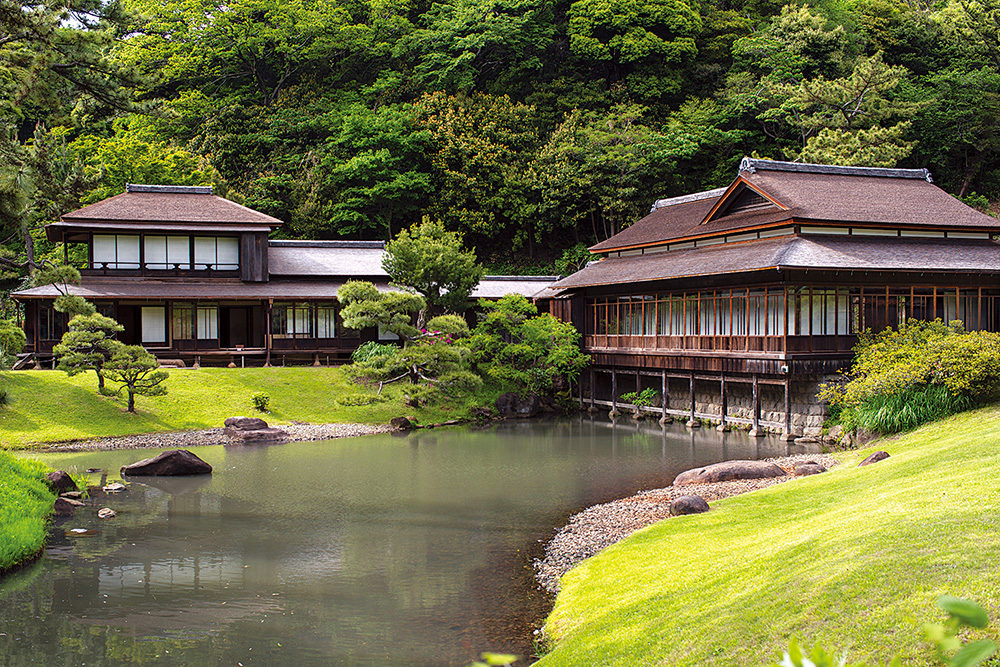
/ Eric Rechsteiner for Zoom Japan
While busy managing his many enterprises, Hara never forgot his classical studies and found the time to become a calligrapher and tea master. He began collecting artworks around the age of 25, such as Japanese and Chinese antiquities (Buddhist paintings, calligraphy and tea utensils) as well as works by contemporary painters. After he died in 1939, his collection exceeded 5,000 works and was distributed to museums and private collectors. It was an impressive collection of artworks, many of which have been classed as National Treasures, including a portrait of the Buddhist goddess Mahamayuri, a masterpiece of the Heian period (from the end of the 8th century to the beginning of the 12th century) now in the collection of the Tokyo National Museum.
Starting in 1902, Hara used part of his wealth to create Sankei-en, developing the garden for over 20 years and landscaping it himself. Being a patron of the arts as well, Hara turned Sankeien into a place to train and support emerging artists (among them, Maeda Seison, Yokoyama Taikan and Shimomura Kanzan), and many notable examples of modern Japanese painting were created in the garden. He also invited artists and intellectuals to talk about art, including scholar and art critic Okakura Tenshin, historian and philosopher Watsuji Tetsuro, writer Natsume Soseki and the Indian poet Rabindranath Tagore.
Together with the Honmoku district, Sankei-en was severely damaged first by the Great Kanto Earthquake and then by air raids during the Second World War. In 1953, it was donated to the City of Yokohama, and the Sankei-en Hoshokai Foundation was established to restore and manage the garden.
Sankei-en’s vast grounds extend across three valleys near the coast and are divided into an Outer Garden, that was opened with free public access in 1906, and an Inner Garden originally kept private for Hara’s personal use. From the beginning, he started relocating historically valuable buildings from different parts of the country and skilfully placing them in the park by taking advantage of the undulations of the site.
Some of them were destroyed during the Second World War while a couple were added afterwards. Today, the 17 remaining structures – from Kyoto, Wakayama, Kanagawa, Gifu and Tokyo, including ten Important Cultural Properties – create magnificent landscapes within the surrounding nature.
One of the most notable architectural features in the garden is Rinshunkak Originally built in 1649, at the beginning of the Edo period, it is believed to be the summer residence of Tokugawa Yorinobu of the Kii branch of the Tokugawa family in Wakayama. Hara bought it in 1906, and after several years of careful examination of the terrain and looking for its ideal location, it was finally rebuilt over a period of three years between 1915 and 1917. Rinshunkaku comprises two one-storey houses and one two-storey building. At the time of its relocation, the shape of the roof and the layout of the three buildings were changed, but the interiors were kept in their original state including the beautiful fusuma (sliding door) paintings of the Kano school. Facing the pond as the centrepiece of the Inner Garden, Rinshunkaku is also called the Eastern Katsura Imperial Villa in reference to the famous Imperial residence in Kyoto.
Shunsoro is a tea room built in the Azuchi- Momoyama period (1568-1600) by Oda Yurakusai, younger brother of Oda Nobunaga, one of the leading figures of the 16th century and the feudal lord who started the process of unifying the country. Topped by a deep-gabled, wooden shingle roof, this tea room is slightly larger than three tatami mats and is remarkable for its nine beautifully constructed windows. It was dismantled during the Second World War to avoid damage from air raids, and was rebuilt in its current location after the war.
The Former Tenzui-ji Juto Oido dates back to 1591 and is said to have been built by the second of the Great Unifiers, Toyotomi Hideyoshi, to pray for the longevity of his mother who was recovering from a long illness. The magnificent sculptures from the Momoyama period, the pillars and the structures above them used to be brightly coloured, but now they are weathered and only a few traces of the old colours are left. This is the first old building that Hara relocated to the inner garden, in 1905. It probably inspired Hara to collect more buildings and works of art related to the Momoyama period while proceeding with the construction of the garden.
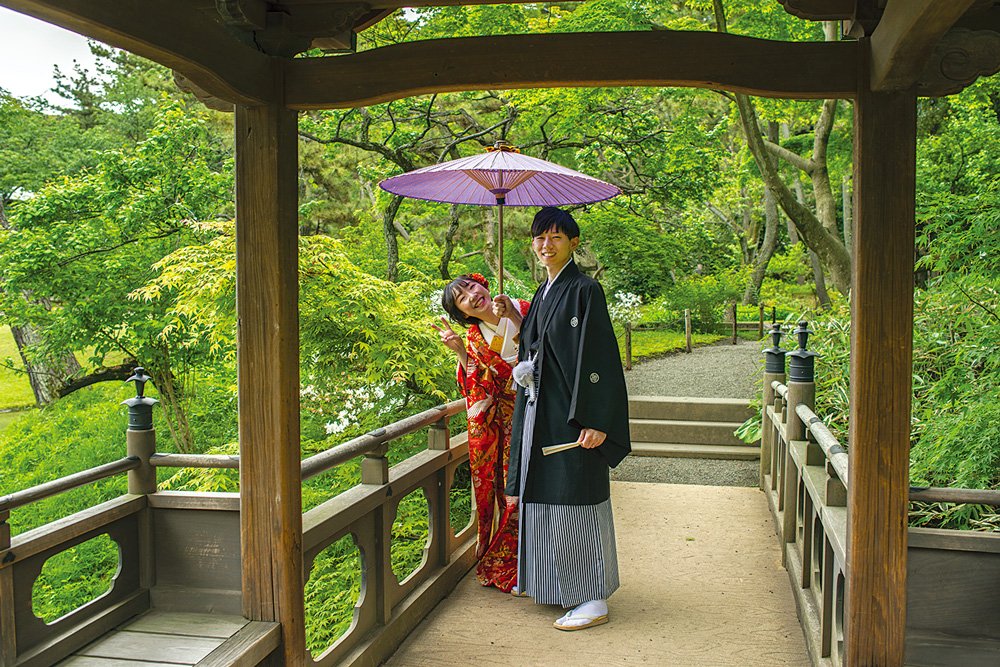
/ Eric Rechsteiner for Zoom Japan
Another outstanding architectural work, and the one structure that is visible from any point of the garden, is the three-storey pagoda that once belonged to Tomyo-ji, a Buddhist temple in Kyoto. Built in 1457 during the Muromachi period (1336-1573), it is the oldest building in the park. The relocation of the pagoda was a major key to the subsequent development of the garden, and its prominent position on a small hill has turned it into a symbol of Sankei-en.
At the opposite end of the pagoda stands Renkain, a more recent construction built in 1917. This tea room is also one of the more secluded structures in the garden as it is located in a bamboo grove. It has a dirt floor near the entrance, and behind it is a six-tatami-mat hall and the tea room proper. The latter room is just two-tatamimat wide.
The Former Yanohara House brings a different touch to the garden’s elegantly refined atmosphere. In fact, this Edo-period building is a farmer’s house built in the gassho-zukuri style made famous by Shirakawa- go, the small village in Gifu Prefecture that was designated as a UNESCO World Heritage Site. This particular house was originally located in Shokawa, another village close to Shirakawa-go. With Shokawa destined to be submerged as a result of dam construction, the house was relocated to Sankei-en in 1960.
Although it is a farmer’s house, it is a gorgeous example of traditional architecture as it belonged to the wealthy Yanohara family, the father of which was one of the village leaders. Besides containing the original hearth, bathroom and kitchen used by the Yanohara, it features upper-class architectural elements, such as a spacious entrance hall for welcoming important guests, tatami mats in the reception room, and distinctive window designs, including katomado, bell-shaped openings often seen in Zen Buddhist temples. This is one of the largest gassho-style (steeply slanted thatched roof ) private houses still existing in Japan and is indicative of the Yanohara family’s prosperity.
Displayed inside the house are farming implements gathered from the area around Shirakawa-go at the time it was relocated. There is an irori sunken hearth in the middle of the living room floor, where a fire is built each day. The smell of the smoke and the sooty black pillars and beams remind the visitors of life in old Shirakawa-go. This is, by the way, the only building with an interior open to the public all year round.
This gassho-style house dates from the first half of the 1800s. The second floor was once used for sericulture (silk farming), with storage space for trays of silkworms and mulberry leaves, but it now houses an exhibition of Japanese folk artefacts.
Finally, Hakuuntei is a retreat designed by Hara himself in 1920 for him and his wife. The roof is made of cypress bark, the eaves are made of wood shingles, and the floor is covered with Kyoma tatami mats of a larger size than usual for the Kansai region. Although it is a sukiya-zukuri building based on carefully selected materials and traditional construction methods, it features modern elements as well such as a lounge, a truss-structured attic, a telephone room and a bathroom with a shower.
Gianni Simone

